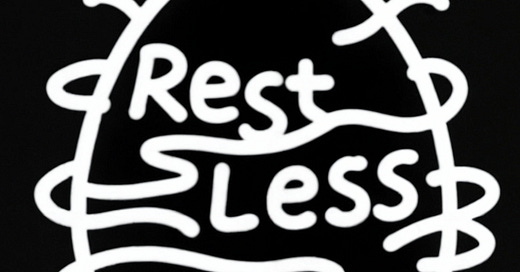A strange cohort is gathering on the fringes of AI models and frontier technologies. These are individuals who manipulate latent space the way a Cézanne, Picasso or Dali bent perspective, only using technology rather than paint to depict those realities we cannot yet see, much less express in words.
When treated as a canvas, technology becomes a medium for artists to describe and deploy foreign realities and relations. Today, a new class of creator is emerging that mobilizes this, the artistry of technology alongside contemporary devices and software to devise experiments that exceed that which is presently possible.
We’ve encountered this dynamic before; in the sciences, for example, with Archimedes sketching hydrostatics, Newton isolating gravity or Mendel breeding peas. In outlining future vocabularies from the vantage point of the present, Avant‑gardists always operate beyond the epistemological remit of the institutions that will later canonise their contributions.
Swap out early telescopes for today’s transformers and one quickly notices how the mega-cap tech companies and their fine‑tuning of foundation models is proceeding down the avenue of the already-known: more parameters, more performance, more productivity. At the same time, everyone, it seems, is acutely aware that AI’s true purpose–whether speaking philosophically or about AI’s profitable use cases–remains to be discovered.
Astride the mega-cap tech companies, the emerging technical avant‑garde is prototyping on the fringes. Their experiments, ranging from voice‑cloned choirs to self‑evolving simulations to quantum‑noise interfaces, put new ink to the question of what AI is for.
Today’s technical avant-garde won’t scale its beliefs by publishing papers or hanging work in galleries. Rather, the scale and speed of contemporary society demands this new creative class productize their hypotheses.
In the same way the iPhone smuggles Bauhaus humanism into every users’ palm or Instagram renders the mundane aesthetic for the everyday photographer, the product form aligns with the scale and speed of contemporary society in its ability to yank a wide swath of users into unfamiliar modes of use.
Today's frontier technologies are crying out for creators whose work begins with a redefinition of what’s possible. The artist-founder is matched for this moment: less interested in making the next great film than in answering the question, what comes after cinema?
Five years ago, it may have sounded cute to invoke the creator economy. Today YouTube splits ad revenue with three million channels.
The next five years will push creativity further upstream: from content to product.
AI, spatial computing and no‑code fab tools are erasing the gap between sketch and platform. At the same time, code is becoming cheap and models are increasingly commodities.
Scalable imagination is quickly becoming the scarcest resource.
We don’t yet know what the next trillion‑dollar AI platform will look like, but we do know it won’t look like B2B SaaS dashboards.
Just as startups once reinvented the institution of the corporation, the emerging class of artist-founders will reshape the startup model, creating novel organizations commensurate with their own forms of technical creativity.
What begins as a creative experiment today, becomes a discrete product tomorrow and by next week’s time is already invisible as an infrastructural ubiquity.
Capital follows categorization. Without the term artist‑founder, investors risk filing these people under the header of eccentric creatives not ready for investment or else demanding their conformity with the familiar category of the creative technologist who needs money to develop the next AI note‑taker.
Name the new class and a flywheel clicks: Recognition → Resources → Scaled Impact.
The pattern is proven over time: Steve Jobs audited a calligraphy course before Apple; Tim Sweeney transformed his Pascal text editor into the game ZZT, seeding Epic Games and, eventually, Unreal Engine; Demis Hassabis co‑designed the simulator Theme Park on his way to DeepMind; Canva, Kickstarter, Pinterest and Tumblr all sprang from creatives scratching that proverbial itch.
Artist-founder is the merely the present name for this eternal archetype according to the contemporary coincidence of people, technology and incentives.
For investors, artist-founder is also a search filter on the biggest asymmetric bet available: Underwrite this creative class now or risk replaying the mistake VCs made dismissing social media in 2004 and mobile gaming in 2008.
To risk putting too fine a point on it, the upside of backing the artist‑founder is finding the company that redefines human-AI experience the way Apple redefined personal computing.
The math is brutal but simple: one artist‑founder victory rewrites the operating system for the entire portfolio; two upends the entire AI-era venture capital ecosystem.



🔥